According provided by Nikon AF-S lens Nikkor 70-200mm 1: 2.8GII ED N VR Nano Crystal Coat SWM IF many thanks to the reader of Radozhiva - Ruslan Ruzhansky.
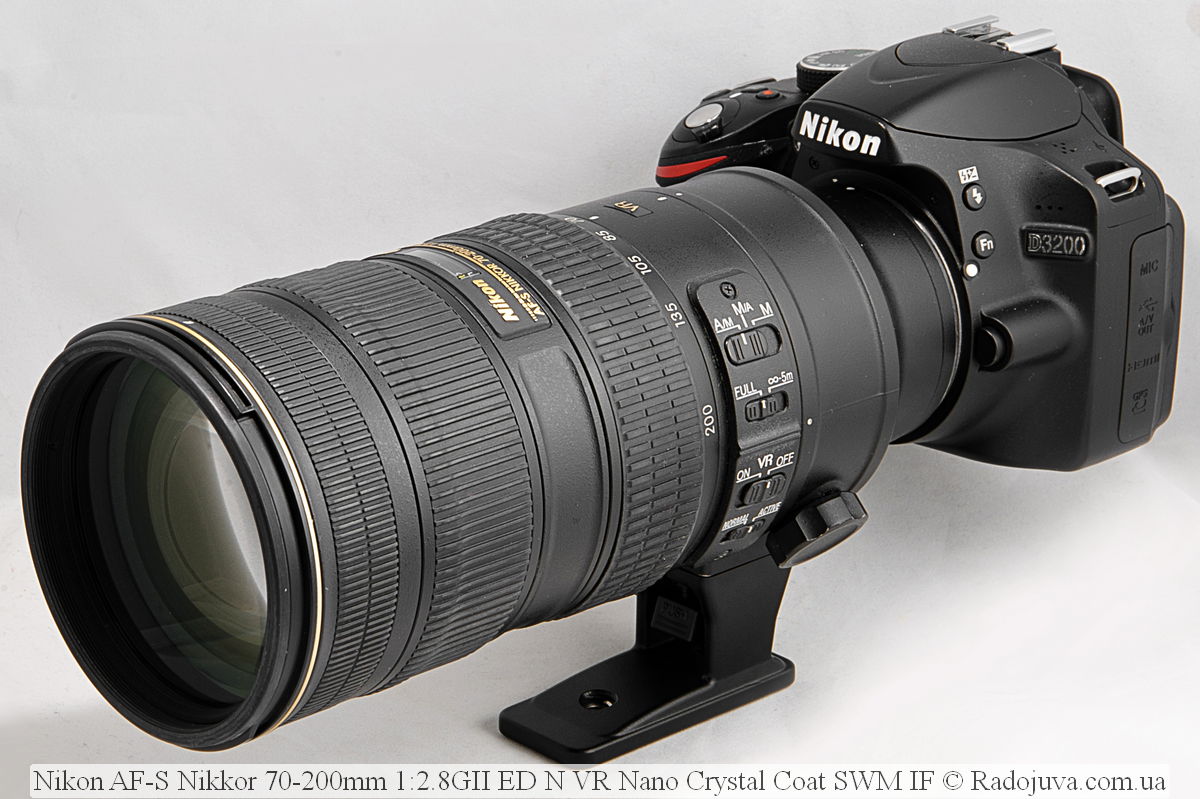
Nikon 70-200 F2.8 VR2 lens and camera Nikon D3200
Navigation
- In short
- History
- Main Specifications
- Enlightenment 'N' (Nano Crystal Coat)
- Assembly
- Tripod foot
- Aperture
- Stabilizer
- Focusing
- Rare switch 'A / M - M / A - M'
- Compatibility and Features
- Image quality
- Sample Photos
- My personal experience with the lens
- Prices
- Alternatives
- Results
- User Comments
- Add your review or question on the lens
In short
Nikon AF-S Nikkor 70-200mm 1: 2.8GII ED N VR Nano Crystal Coat SWM IF (abbreviated as Nikon 70-200 / 2.8 VRII) Is a very good lens. It belongs to the TOP line of Nikon lenses and should not fail in any situation. This is one of the best Nikon lenses I've ever shot. Nikon 70-200 / 2.8 VRII is fast, reliable, fast, sharp and useful.
First of all, Nikon 70-200 / 2.8 VRII is used in reportage and portrait photography. It is well suited for sports photography, street photography, wedding photography, and even landscapes. The Nikon 70-200 / 2.8 VRII is strong where a fast telephoto lens with stabilizer is needed. At the time of this writing, I'm sure the Nikon 70-200 / 2.8 VRII is best Nikon Nikkor telephoto range up to 200 mm.
Nikon 70-200 / 2.8 VRII enters'Holy Trinity Father Nikon ':
- Nikon ED AF-S Nikkor 14-24mm 1: 2.8GN Nano Crystal Coat SWM IF Aspherical
- Nikon ED AF-S Nikkor 24-70mm 1: 2.8GN NanoCrystalCoat SWM IF Aspherical/ Nikon ED AF-S Nikkor 24-70mm 1: 2.8E VR N Nano CrystalCoat SWM IF Aspherical
- Nikon ED AF-S Nikkor 70-200mm 1: 2.8GII VR N Nano Crystal Coat SWM IF (from this review) / Nikon AF-S Nikkor 70-200mm 1: 2.8E FL ED N VR Nano Crystal Coat SWM IF
Nikon marketers recommend sinful whale-lens photographers to pray, fast and raise money for this triptych.
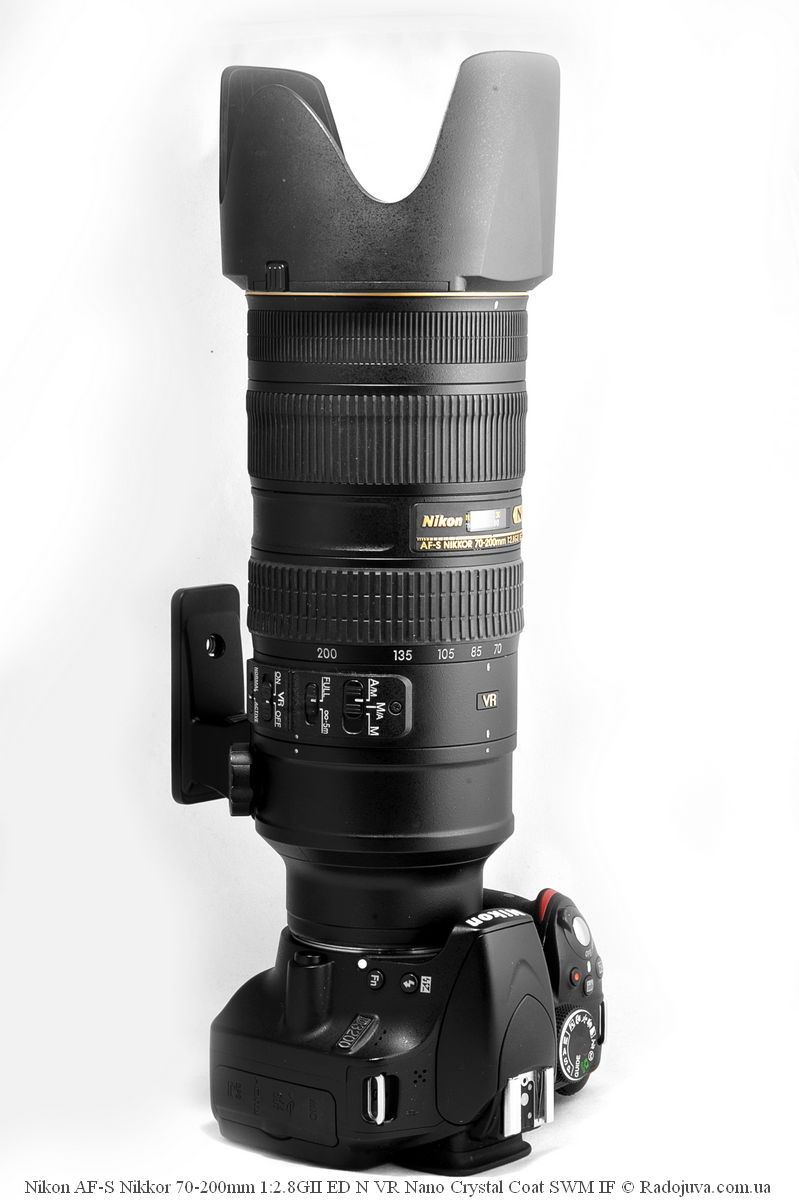
Nikon 70-200 F2.8 VR2 lens with camera Nikon D3200
History
Nikon was the first to create an 80-200 / 2.8 class lens. Over time, such lenses became very popular and later evolved into models of the class 70-200 / 2.8.
List of manual lenses Nikon Nikkon 80-200 / 2.8:
- Nikon Zoom-Nikkor * ED 80-200mm 1: 2.8 (MF, AI-S), a prototype introduced in 1978, but has not yet received mass production. 12 elements in 9 groups (with 1 ED element).
- Nikon Zoom-Nikkor * ED 80-200mm 1: 2.8 (MF, Ai-s) - from February 1982 to September 1992 (according to other sources, to May 1985). 15 elements in 11 groups (with 1 ED element).
A complete and accurate list of all Nikkon Nikkor class 70(80)-(180)200/2.8 autofocus professional lenses:
- Nikon ED AF Nikkor 80-200mm 1: 2.8 (MKI) - November 1987 to September 1992, 16 elements in 11 groups (with 3 ED elements)
- Nikon ED AF Nikkor 80-200mm 1: 2.8D (MKII) - from September 1992 to 1997, 16 elements in 11 groups (with 3 ED elements)
- Nikon ED AF Nikkor 80-200mm 1: 2.8D (MKIII) - January 1997 to present, 16 elements in 11 groups (with 3 ED elements)
- Nikon ED AF-S Nikkor 80-200mm 1: 2.8D Silent Wave Motor (MKIV, AF-S) - from December 1998 to 2003, 18 elements in 14 groups (with 5 ED elements). There are two colors: black and gray.
- Nikon ED AF-S VR-Nikkor 70-200mm 1: 2.8G Vibration Reduction SWM IF (MKV, VRI) from February 2003 to January 2009, 21 elements in 15 groups (with 5 ED elements). There are two colors: black and gray.
- Nikon AF-S Nikkor 70-200mm 1: 2.8GII ED N VR Nano Crystal Coat SWM IF (MKVI, VRII) - July 2009 to present, 21 elements in 16 groups (with 7 ED elements).
- Nikon AF-S Nikkor 70-200mm 1: 2.8E FL ED N VR Nano Crystal Coat (MKVII, E) - from October 2016 to the present, 22 elements in 18 groups (6 ED, 1 FL, 1 HRI element). There is a rare subversion Nikon AF-S Nikkor 70-200mm 1: 2.8E FL ED N VR Nano Crystal Coat Nikon 100th Anniversary (100th Anniversary) - April 2017 to present, features a metallic gray finish with the Nikon 100th Anniversary logo).
- Nikon Nikkor Z 70-200mm 1: 2.8 VR S (MK VIII, Z, S-series) - from January 2020 to the present day. Nikon Z mirrorless version, 21 elements in 18 groups (6 ED, 2 ASP, 1 FL, 1 SR)
- Nikon Nikkor Z 70-180mm 1: 2.8 (MK IX,Z) - from June 2023 to the present day. Version for Nikon Z mirrorless cameras, 19 elements in 14 groups (5 ED, 3 ASP, 1 SUPER ED), diagram from Tamron 70-180mm F / 2.8 Di III VXD Model A056
The list shows how the optical circuits became more complex, especially how the number of ED elements increased. Also, you can see that the line of these lenses is updated every 5-6 years.
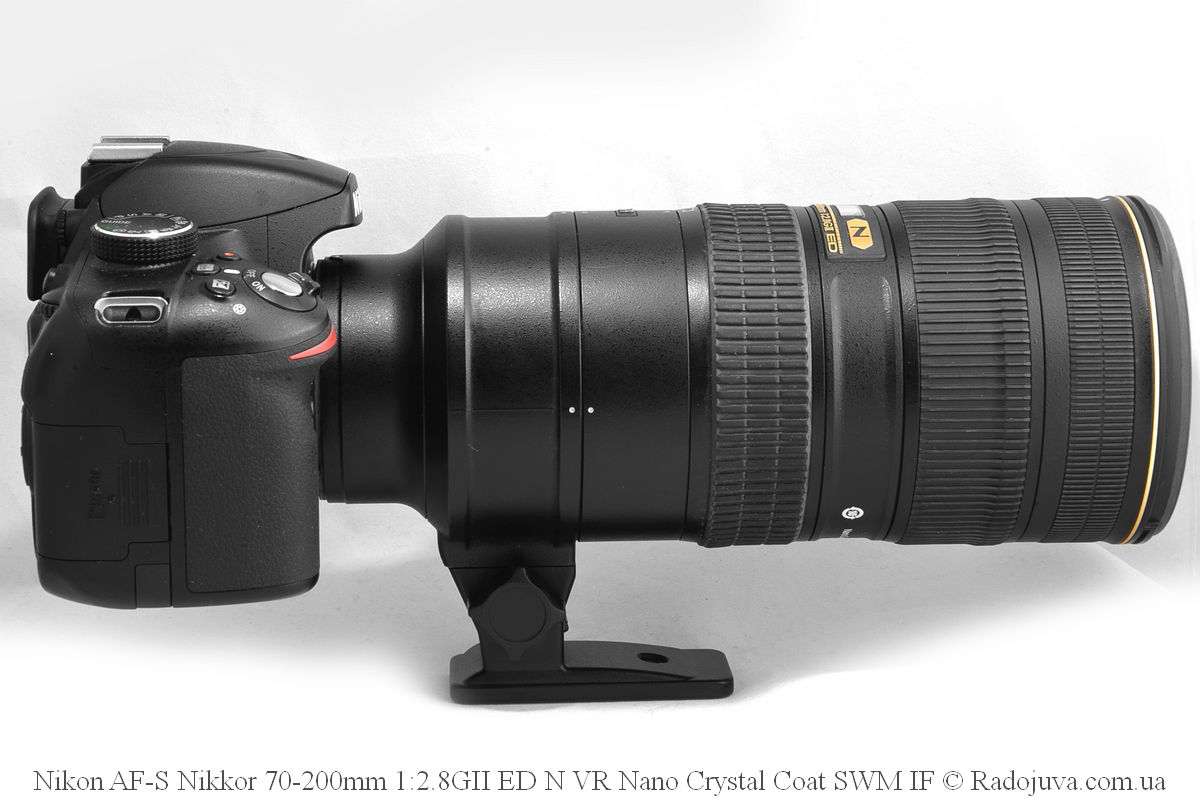
Nikon 70-200 F2.8 VR2 lens on the camera Nikon D3200
Main technical characteristics of Nikon AF-S Nikkor 70-200mm 1: 2.8GII ED N VR Nano Crystal Coat SWM IF:
| Review Instance Name | Nikon AF-S Nikkor 70-200mm 1: 2.8GII ED N VR Nano Crystal Coat SWM IF 20309839 |
| Basic properties |
|
| Front Filter Diameter | 77 mm, metal thread for filters |
| Focal length | 70-200 mm EGF for Nikon DX cameras is 105-300 mm |
| Zoom ratio | 2.86 X (usually just talking about XNUMXx zoom) |
| Designed by | for digital cameras Nikon FX |
| Number of aperture blades | 9 rounded petals |
| Tags | a window with a focusing distance in meters and feet, focal lengths for 70, 85, 105, 135, 200 mm, a bayonet mount mark, a mounting and fixing mark for the hood, and the tripod foot has a mark for horizontal / vertical orientation. |
| Diaphragm | from f / 2.8 over the entire range of focal lengths to f / 32. The lens does not have an aperture ring (G - lens type) |
| MDF (minimum focusing distance) | 1.4 m over the entire range of focal lengths, a maximum magnification ratio of 1: 8.3 is available at 200 mm |
| The weight | 1540 g |
| Optical design | 21 elements in 16 groups. The scheme includes:
|
| Lens hood | Nikon HB-48 (supplied) |
| Transportation | Using the soft cover CL ‑ M2 (supplied) |
| Manufacturer country | MADE IN JAPAN |
| Period | From July 30, 2009 to October 19, 2016. Subsequently replaced by a model Nikon AF-S Nikkor 70-200mm 1: 2.8E FL ED N VR Nano Crystal Coat SWM IF |
| Instruction (multilingual) | Download |
| Price |
Assembly
Nikon 70-200 / 2.8 VRII is manufactured in Japan. The build quality is very high.
On the mount side, the lens has a special rubber skirt that protects the lens from dust and moisture. There is no exact official data on the Nikon 70-200 / 2.8 VRII security. I tend to think that because of this rubber seal, the lens has a base dust and moisture protection. In more detail, the security issue of Nikon Nikkor lenses I have described here.
The focus and zoom rings are rubberized, large and comfortable. Near the front lens there is another rubberized ring, which does not rotate, but only serves for a more comfortable grip. The Nikon 70-200 / 2.8 VRII uses standard professional 77mm color filters. The outer part of the case frame near the front lens is rubberized, which is a kind of protective bumper.
True, despite the entire super-assembly of the lens, the rubber on the zoom ring of the specimen from this review greatly stretched and interfered with comfortable work. For a lens costing about 2000 USD this is an invalid puncture. Moreover, the copy from the review was used quite rarely. Replacing gum (they change all three at once) costs about 40 cu
The inside of the body rim, on the bayonet side, is covered special dust collecting velor or flock. While changing the focal length, the rear lens remains motionless, this lens is not afraid of the effect of a 'vacuum cleaner'.
There is a bayonet mount mark and a mark on the case for quick installation of the hood. Lens uses small plastic hood HB-48, which is automatically fixed in special grooves located near the front lens of the objective. The hood has a button for removing it from the lens. The hood can be installed in the opposite direction for transportation. In this position, access to the focusing ring is lost. Why such a small hood is used for a telephoto lens is a mystery.
The Nikon 70-200 / 2.8 VRII comes with a CL ‑ M2 soft case, and the lens itself comes in a huge cardboard box with a characteristic Nikon paint job.
Tripod foot
The tripod foot consists of two parts: a non-removable clamp and a removable leg. The leg snaps into place on a clamp and is secured with a special clamping screw. To remove the leg, additionally press the 'PUSH' button. The leg has two identical connectors for mounting on a tripod.
The clamp has a regular connector for mounting a tripod, and the leg is attached to it. When the leg is removed, the lens can still be mounted on a tripod through the connector on the clamp itself. I think this solution is very convenient.
The Nikon 70-200 / 2.8 VRII collar and body have markings for quickly setting the horizontal or vertical position of the lens and camera. The desired clamp position is fixed with an additional clamping screw.
Stabilizer
The Nikon 70-200 / 2.8 VRII has the Nikon VR Image Stabilizer ('Vvibration Reduction '- Vibration Suppression), which according to the instructions can compensate 3 stops by shutter speed... In numerical terms, this means that you can shoot at shutter speeds 8 times slower than required by a lens without a stabilizer. The stabilization system of the Nikon 70-200 / 2.8 VRII refers to second generation and this is the main reason why this lens is called 'VRII ' instead of more correct 'GII'.
The Nikon 70-200 / 2.8 VRII lens manual states 3 stops (measured by Nikon), and the official website 3.5 feet (measured by CIPA). In any case, the stabilizer works well.
To enable / disable the stabilizer on the lens there 'VR ON / OFF' switch... There is a 'Normal / Active' switch to select the mode. The gimbal can operate in two modes: 'Normal' and 'Active'.
- 'Normal' mode designed for most scenes and avoids movement when camera shake. Theoretically, the 'Normal' mode can still track the movement of the camera to create panoramas.
- Active Mode most suitable for shooting when the camera can not only shake, but also move in different directions. Most often, it is advised to use this mode when shooting in motion.
I was able to take pictures of stationary objects without blur and strong efforts at 200 mm focal length and 1/15 of a second (an example is in the gallery). And if you try hard, you can get a sharp shot even on shutter speed 1/8 s and 200 mm focal length. In real shooting conditions, the stabilizer feels very good.
I have only seen a better stabilizer so far Nikon 70-200 / 4G.
When shooting with a tripod, the stabilizer should be turned off. When the AF-ON button is pressed (on those cameras on which it is), the stabilizer does not turn on, which is not very convenient.
Enlightenment 'N' (Nano Crystal Coat)
Nikon 70-200 / 2.8 VRII in its full name has the letter 'N'. The letter 'N' means 'Nano Crystal Coat' - nanocrystalline antireflection of optics. This enlightenment allows you to cope well with glare and flare, and also creates excellent color reproduction. Most likely, only one of the lenses of this lens has' N'-enlightenment. The rest of the lenses have a classic SIC enlightenment (Nikon Super Integrated Coating - Special Super Integral Coating).
It is unfortunate that Nikon does not indicate the number of lenses in the optical circuit that have such enlightenment. I, like some other users, believe that the letter 'N' is put more for marketing.
Focusing
Nikon 70-200 / 2.8 VRII focuses quietly enough thanks to 'SWM'-motor (Silent Wbird Motor - quiet wave motor) and refers to the lens'AF S'type (with built-in motor focusing), and therefore it will automatically focus on any Nikon digital SLR camera.
The minimum focusing distance is 1.4 meters over the entire range of focal lengths, while 200 mm of focal length can be shot Macro with 1: 8.3 magnification. One of the minor drawbacks of the lens is the very large MDF, this drawback is especially felt during the use of 70 mm focal length.
Nikon 70-200 / 2.8 VRII has a window with distance scale in meters and feet. There is no depth of field scale, as well as marks for working in the infrared spectrum.
The Nikon 70-200 / 2.8 VRII has an optional 'Full ∞-5m' switch that acts as a focusing distance limiter.
- In the 'Full' position, automatic focusing is available over the entire range of distances - from ∞ to 1.4 m.
- In the '∞-5m' position, autofocus is available in the range from 5 meters to ∞.
Note that during manual focus, the limiter does not work.
Auto Focus Speed - high. I want to note a good tenacity of focus. On cameras Nikon D700 и Nikon D3200 the lens rarely refocused or was unable to focus exactly. Of course, during testing, I encountered focusing errors, but their number was insignificant.
During focusing, the front and rear lenses remain stationary, as the lens uses internal focusthat is indicated on the case by the letters'IF'-'Iinternal Focus' - 'Inner Focus'. During zooming, the front and rear lenses remain stationary - the lens has internal zoom. Thus, during focusing and changing the focal length, only the internal parts of the lens move. You can easily use any filters, for example polarizing or gradient.
Nikon 70-200 / 2.8 VRII suffers greatly 'Focus breathing'- change in viewing angle when focusing. This effect is even indicated in the instructions for the lens. At 200 mm, during focusing on MDF, in terms of viewing angles, the focal length of the lens is approximately 135 mm. This is not a flaw, but a common feature of lenses with an internal type of focus.
Also, the Nikon 70-200 / 2.8 VRII is very close to parfocal lenses, which do not knock out focusing during focal length changes. They say that the previous version of VRI was a real parfocal, and the version of VRII has become worse in this regard.
Rare switch 'A / M - M / A - M'
The lens has a rather rare focus mode switchA / M - M / A - M'. Typically, these lenses have a more common switch.M / AM'.
If you look, in the 'A / M' position, automatic focusing works with the constant possibility of manual adjustment / focus adjustment, but with the priority of auto focus. It means that 'A / M' mode avoids canceling the autofocus mode due to accidental rotation of the focus ring.
To cancel it during auto focus and switch to the manual focus method, you need to turn the focus ring some distance. The length of this distance is known only in practice.
'ModeM / A'disables automatic focusing immediately after the start of rotation of the focus ring, and the' A / M 'mode disables automatic focusing only after some prolonged rotation of the focus ring.
Nikon has made a distinction between 'A / M' and 'M / A'very fine. If we maximally generalize the difference between these modes, it all comes down to how sensitive the focus ring is to turn off the automatic focus and switch to manual focus mode. I advise you to leave the 'A / M' mode on and forget about this switch forever.
The 'A / M - M / A - M' switch for focusing modes is mostly found on Nikon's 'longest' telephoto lenses, and it is not clear how such a short (70mm) lens got into this list.
A focus mode switch 'A / M - M / A - M' is mainly found on Nikon's 'longest' telephoto lenses:
- Nikon N AF-S Nikkor 200mm 1: 2G II ED VR
- Nikon N AF-S Nikkor 300mm 1: 4E PF ED VR [overview]
- Nikon N AF-S Nikkor 300mm 1: 2.8G II ED VR [overview]
- Nikon N AF-S Nikkor 400mm 1: 2.8G ED VR
- Nikon N AF-S Nikkor 400mm 1: 2.8E ED FL VR
- Nikon N AF-S Nikkor 500mm 1: 4G ED VR
- Nikon N AF-S Nikkor 500mm 1: 4E ED FL VR
- Nikon N AF-S Nikkor 500mm 1: 4E ED PF VR
- Nikon N AF-S Nikkor 600mm 1: 4G ED VR
- Nikon N AF-S Nikkor 600mm 1: 4E ED FL VR
- Nikon N AF-S Nikkor 800mm 1: 5.6E ED FL VR
- Nikon N AF-S Nikkor 70-200mm 1: 2.8G II ED VR [overview]
- Nikon N AF-S Nikkor 70-200mm 1: 2.8E FL ED VR
- Nikon AF-P Nikkor 70-300mm 1:4.5-5.6E ED VR
- Nikon N AF-S Nikkor 80-400mm 1: 4.5-5.6G ED VR [overview]
- Nikon N AF-S Nikkor 120-300mm 1: 2.8E FL ED SR VR [announcement]
- Nikon N AF-S Nikkor 180-400mm 1: 4E FL ED VR TC 1.4
- Nikon N AF-S Nikkor 200-400mm 1: 4G II ED VR
You can see the various types of switches that use Nikon autofocus lenses. here. In general, Nikon likes to confuse users with various obscure autofocus modes.
The focus ring rotates 135 degrees. When extreme positions are reached, the focus ring does not rest, but continues to slide, without affecting the focus.
On the lens that I visited, the focus ring, during rotation, rubs against something inside and creates an unpleasant rough sound. Developers apparently did not succeed in achieving the oil stroke of the focus ring.
Unfortunately, unlike the Nikon 80-200 / 2.8 MKIV and Nikon 70-200 / 2.8 VRI versions, three additional buttons were removed from the lens body in the new lens, which used to allow more effective focus control.
Diaphragm
Diaphragm lens consists of 9 rounded petalsthat form a flat hole. Diaphragm closes to F / 32 over the entire range of focal lengths. The lens does not have an aperture ring (G - lens type).
Maximum diaphragm F / 2.8 is available over the entire range of focal lengths.
One of the implicit advantages of 1: 2.8 telephoto lenses is that they can be used with teleconverters without too much trouble. So, Nikon 70-200 / 2.8 VRII is compatible with teleconverters TC-14EII / TC-17EII / TC-20EII (possibly others). When used with a 2x teleconverter, the lens converts to '140-400 / 5.6', which allows autofocus on all Nikon DSLR cameras. When using teleconverters with darker telephoto lenses, autofocus can cause problems.
Image quality
With Nikon 70-200 / 2.8 VRII image quality, everything is fine. I don’t even want to go into details about the image quality from this lens. But, to be objective, still the Nikon 70-200 / 2.8 VRII has a small unified distortion, which changes from barrel-shaped to pillow-shaped with increasing focal length. On open diaphragms there is a slight vignetting. Chromatic aberrations well designed.
Excellent sharpness deserves special attention. Even on camera Nikon D3200, which at the time of writing the review had the highest pixel density of all the central control rooms NikonThe sharpness and detail, at any focal length and f / 2.8 aperture, were simply impressive.
Also, the bokeh of the lens deserves special attention, which can produce “cream shots” in the range of 135-200 mm.
Nikon 70-200 / 2.8 VRII is a lens for pros who do not read blogs and forums, they are not interested in how many vignette steps or distortion percentages, they buy this lens and shoot all day long. With Nikon 70-200 / 2.8 VRII, you can squeeze a lot. In the comments, by the way, you will surely see the question "how is it in comparison with Canon 70-200 / 2.8L?" - some photographers are ready to change the system in order to use the best 70-200 / 2.8, this lens is so in demand.
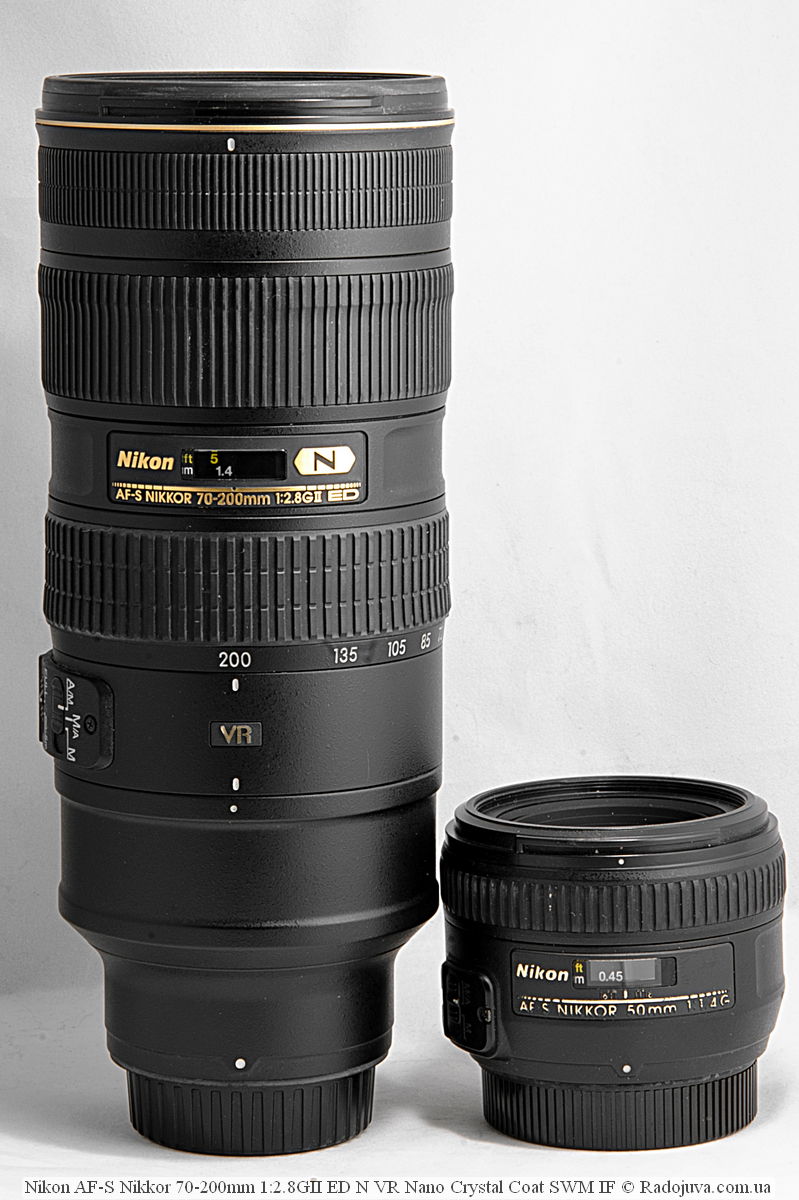
Nikon 70-200 / 2.8 VRII and Nikon 50 / 1.4G
Sample photos on Nikon 70-200 / 2.8 VRII
All photos in the gallery were taken with a camera Nikon D700 FX and Nikon D3200 Dx. During shooting was used safety filter Hoya HD UV 77mm made in Japan. All photos were taken by converting the original RAW files using the original Nikon ViewNX-I utility. Photos in the gallery are reduced, with a size of 2048 pixels on the long side and adding data from EXIF. In fact, the photos are presented without processing.
RAW source photos from camera Nikon D700 can скачать здесь, in jpeg format with Nikon D700 here, in RAW format with Nikon D3200 here and jpeg with Nikon D3200 here.
Compatibility and Features
The lens will work correctly at all Nikon digital SLR cameras.
When using the built-in flash, especially with the lens hood installed, the surrounding photographers will simply die laughing.
EGF lens for Nikon DX cameras is 105-300mm. There is no complete analogue of the Nikon 70-200 / 2.8 VRII for Nikon DX cameras. The closest 'analogue', from the Nikon DX series, is Nikon DX AF-S Nikkor 55-300mm 1: 4.5-5.6G ED VR SWM HRI. This Nikon 70-200 / 2.8 VRII works wonderfully on cropped cameras and does not cause any particular inconvenience due to recalculation EGF. In the case of telephoto lenses, crop factor Nikon DX cameras, in most cases, are only beneficial.
A list of all Nikon DX series lenses can be found. here. For a list of all professional Nikon DX series lenses, see here. The optical design of all Nikon DX lenses can be viewed here.
My experience
If I were offered to leave one single lens with which I would have to shoot the rest of my life, then most likely it would be Nikon 70-200 / 2.8 VRII. Even one of my friends photographer who shoots on Nikon D3s and the Nikon 70-200 / 2.8 VRII once said, 'If it were possible, I would shoot everything on 70-200 / 2.8 and not bother.'
I have a positive attitude towards the Nikon 70-200 / 2.8 VRII and I am not at all concerned about its heavy weight and impressive size. Practice has shown that the Nikon 70-200 / 2.8 VRII is a great addition to portrait lenses with 85 mm focal length. True, replace portrait lens class 85/105/135/180/200 mm Nikon 70-200 / 2.8 VRII alone will be difficult, it painfully different pictures. Personally, I would use Nikon 70-200 / 2.8 VRII exclusively for reporting, wedding and portrait shooting.
Among professional wedding photographers, the Nikon 70-200 / 2.8 VRII is very popular.
Want to discuss something with me on this lens? Then write in the comments, I will try to answer.
Prices
Real prices for Nikon AF-S Nikkor 70-200mm 1: 2.8GII ED N VR Nano Crystal Coat SWM IF see here, or in the price block below:
Alternatives
Below is a list of all fast class 70-200 / 2.8 lenses with built-in image stabilizer:
Canon (Canon EF / EF-S / RF)
- Canon Zoom Lens EF 70-200mm 1: 2.8 L IS USM
- Canon Zoom Lens EF 70-200mm 1: 2.8 L IS II USM
- Canon Zoom Lens EF 70-200mm 1: 2.8 L IS III USM
- Canon Lens RF 70-200mm F2.8 L IS USM
Nikon (Nikon F, Z)
- Nikon ED AF-S VR-Nikkor 70-200mm 1: 2.8G Vibration Reduction SWM IF (black or silver version)
- Nikon AF-S Nikkor 70-200mm 1: 2.8GII ED N VR Nano Crystal Coat SWM IF
- Nikon AF-S Nikkor 70-200mm 1: 2.8E FL ED N VR Nano Crystal Coat SWM IF + its modification 'Nikon 100th Anniversary Edition'
- Nikon Nikkor Z 70-200mm 1: 2.8 VR S
Sony (Sony E)
Sigma (for different mounts)
- Sigma 70-200mm 1: 2.8 APO DG HSM EX OS (Optical Stabilizer) (for Canon EF / EF-S, Nikon F, Sony / Minolta A, Sigma SA, Pentax K, no longer available for Pentax)
- Sigma 70-200mm 1: 2.8 DG OS HSM S | Sport (for Canon EF / EF-S, Nikon F, Sigma SA)
Tamron (for different mounts)
- Tamron USD DI SP 70-200mm F / 2.8 VC Ultrasonic Silent Drive A009 (for Canon EF / EF-S, Nikon F and Sony / Minolta A)
- Tamron SP 70-200mm f / 2.8 Di VC USD G2 A025 (for Canon EF / EF-S, Nikon F)
- Tamron 70-180mm F / 2.8 Di III VXD Model A056 (Sony FE only)
Panasonic
- Panasonic LUMIX S PRO 1: 2.8 / 70-200mm OIS (Leica L, Fall 2019)
I would try to do without alternatives and buy exactly Nikon 70-200 / 2.8G VR II or Nikon 70-200 / 2.8E FL VR.
Comments on this post do not require registration. Anyone can leave a comment. Many different photographic equipment can be found on AliExpress.
Results
The Nikon 70-200 / 2.8 VRII is not perfect, but still it is the best lens in the Nikon Nikkor class of fast telephoto lenses with a focal length range of up to 200 mm.
UPD: On October 19, 2016 a new similar lens was presented - Nikon AF-S Nikkor 70-200mm 1: 2.8E FL ED N VR Nano Crystal Coat SWM IF + later its modification 'Nikon 100th Anniversary Edition' appeared
Material prepared Arkady Shapoval. Training/Consultations | Youtube | Facebook | Instagram | Twitter | Telegram

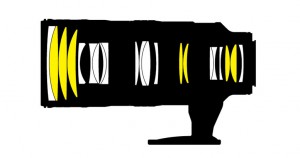
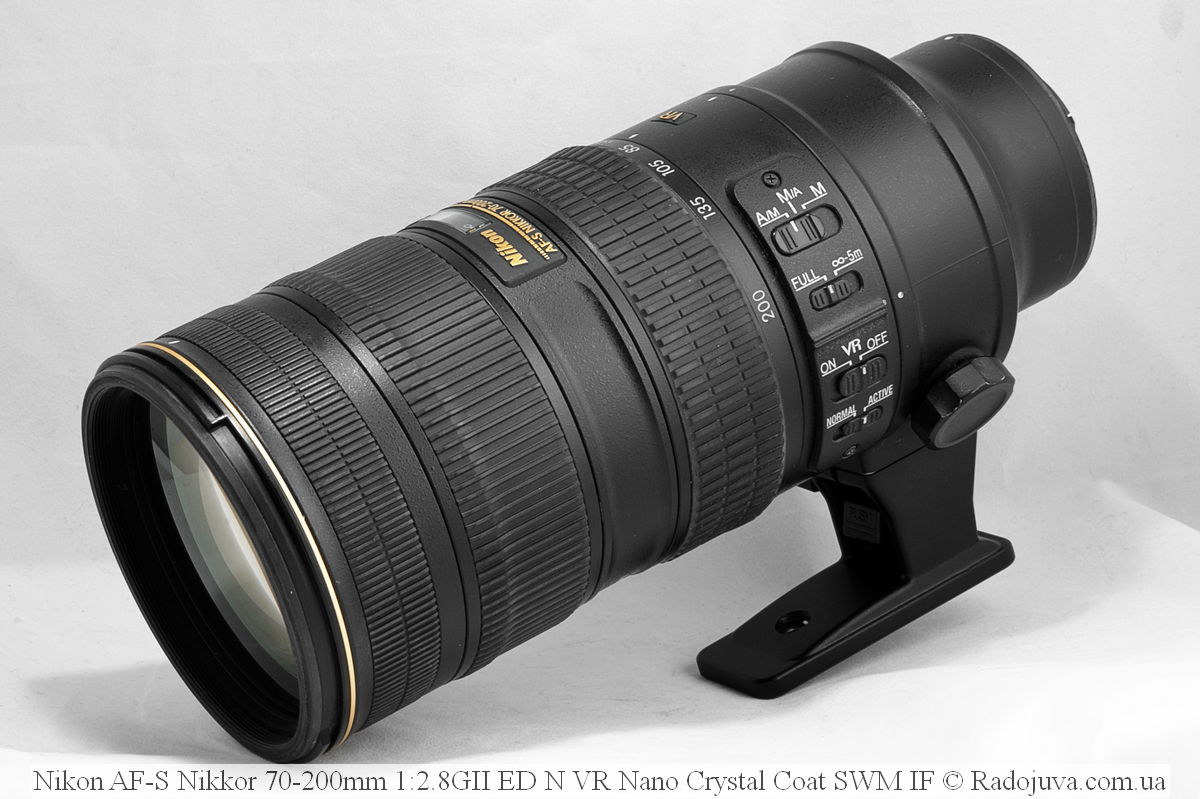
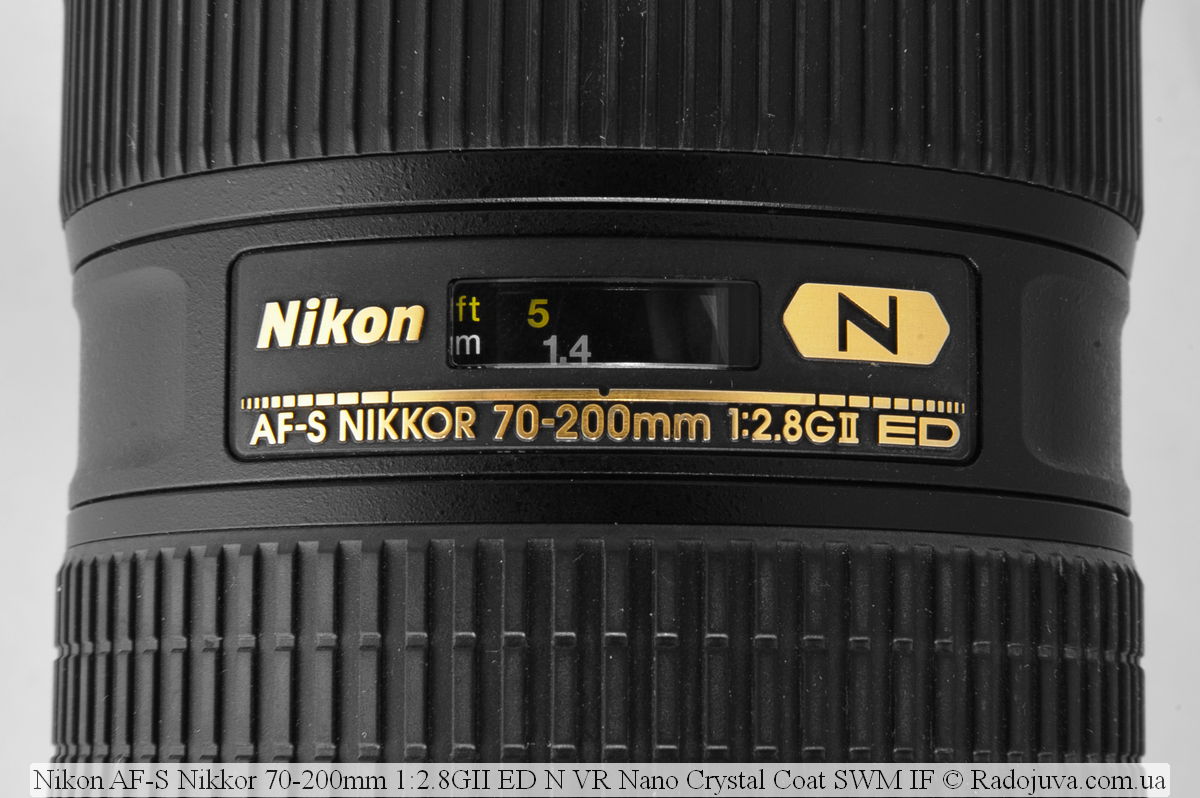
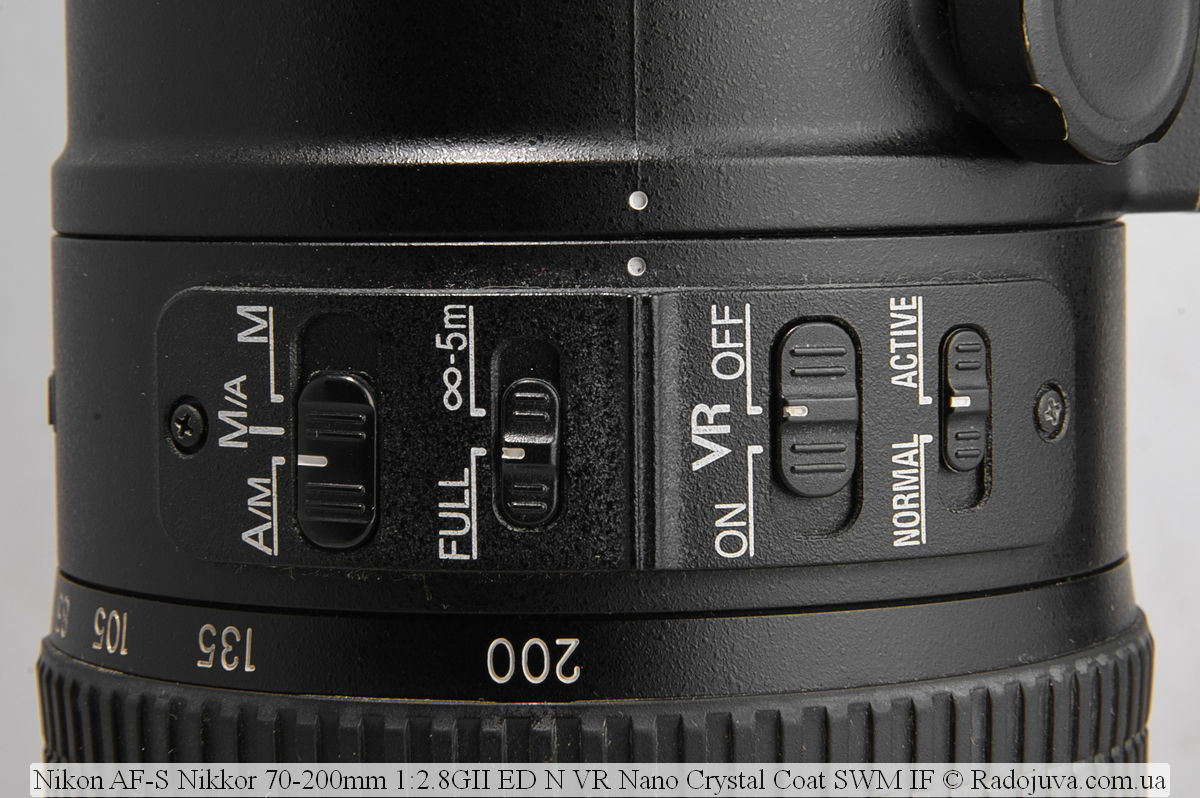
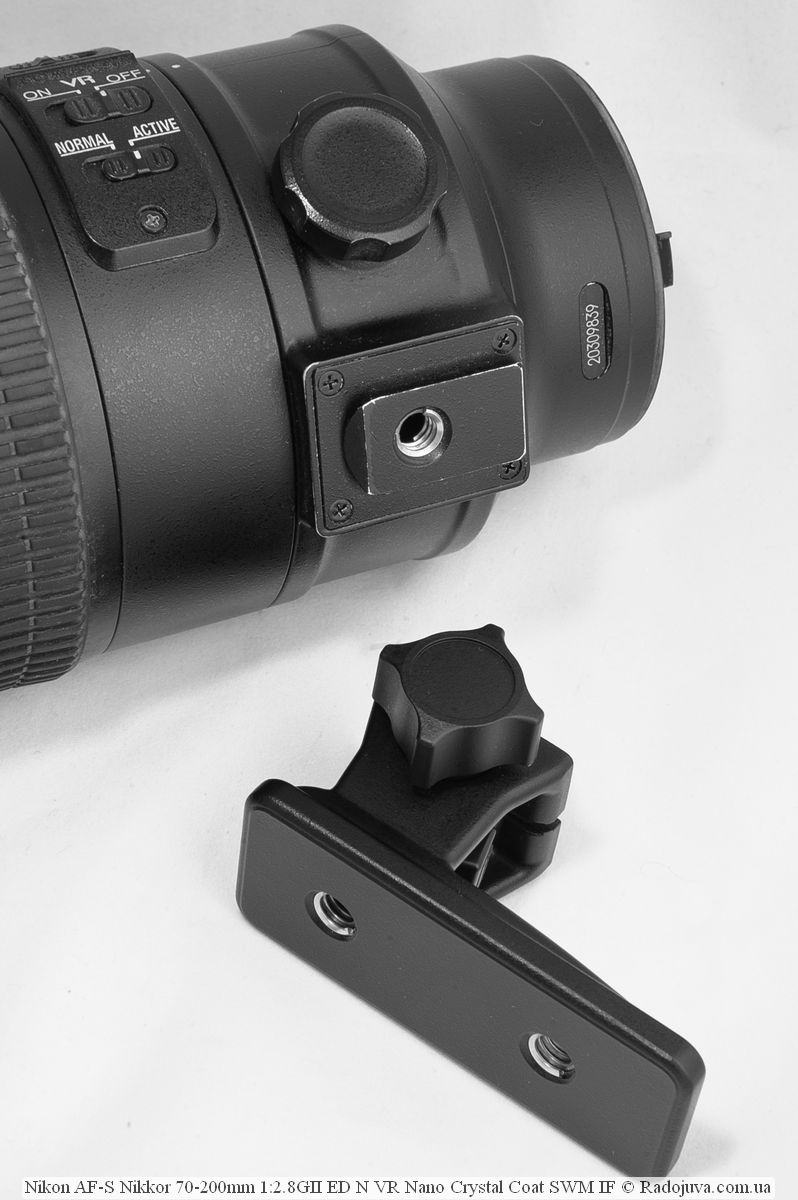
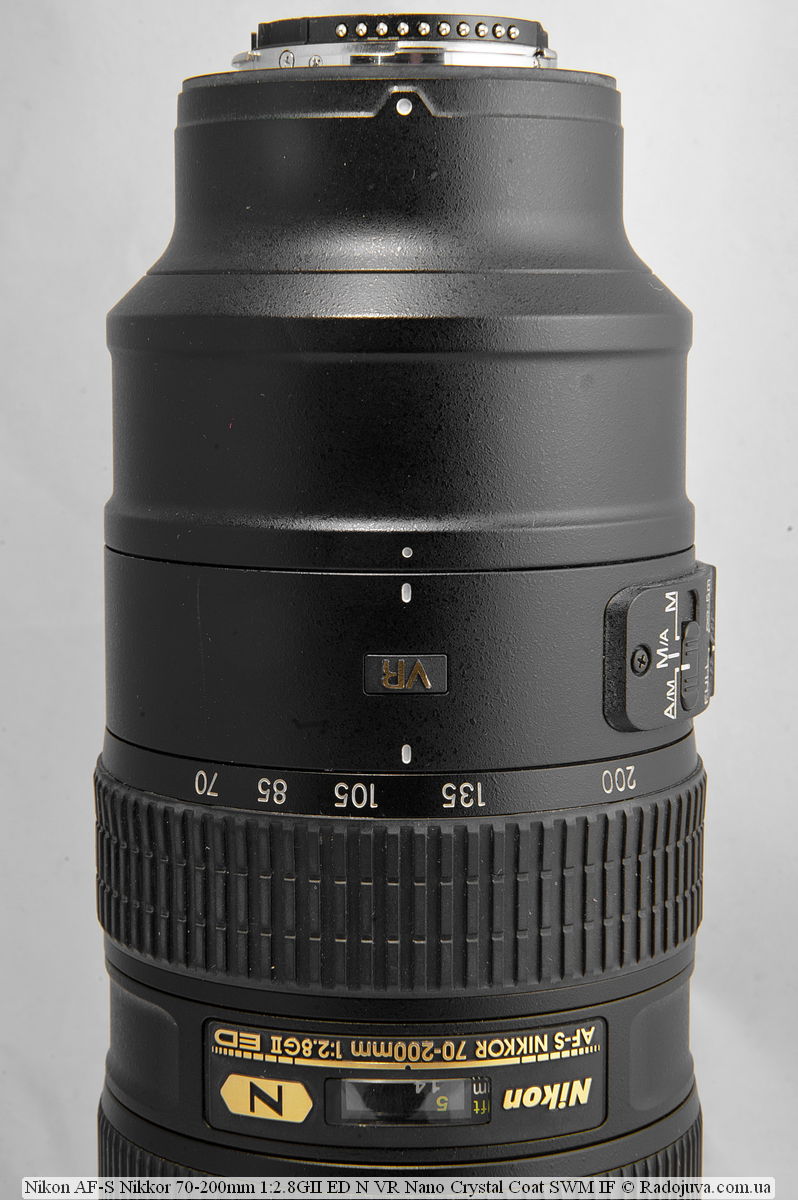
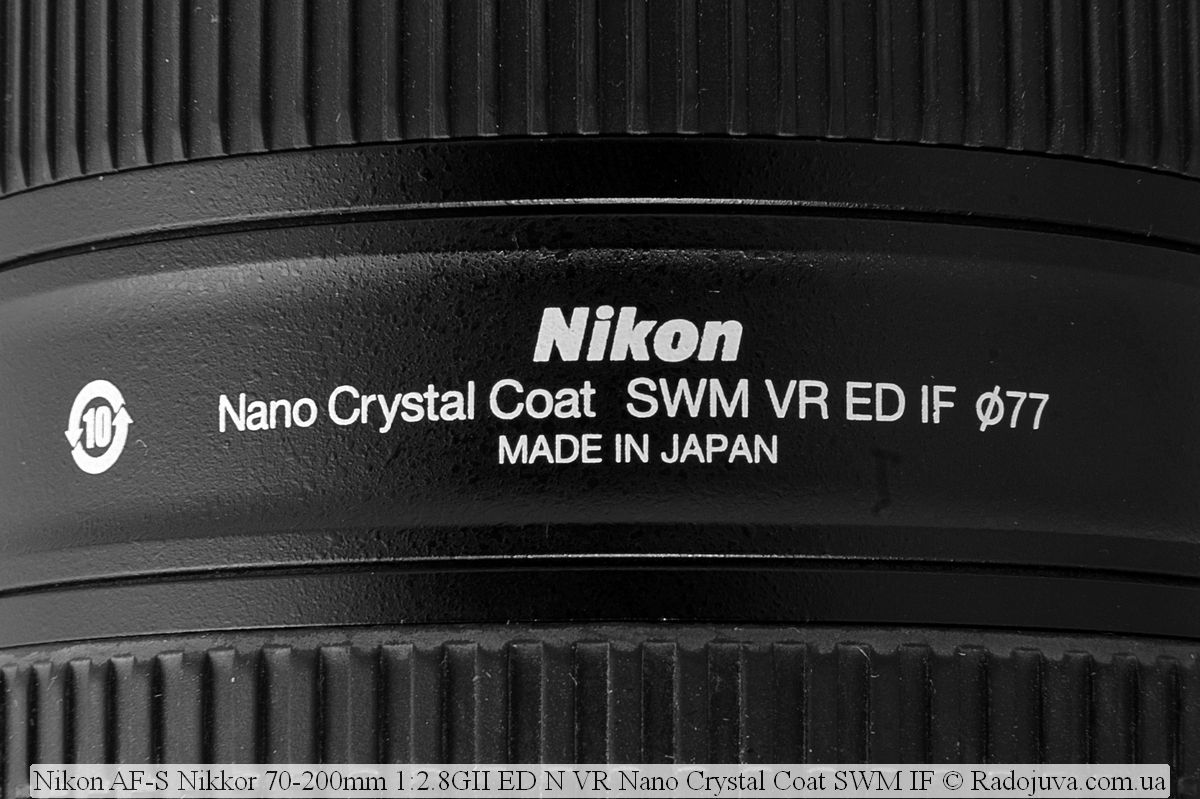
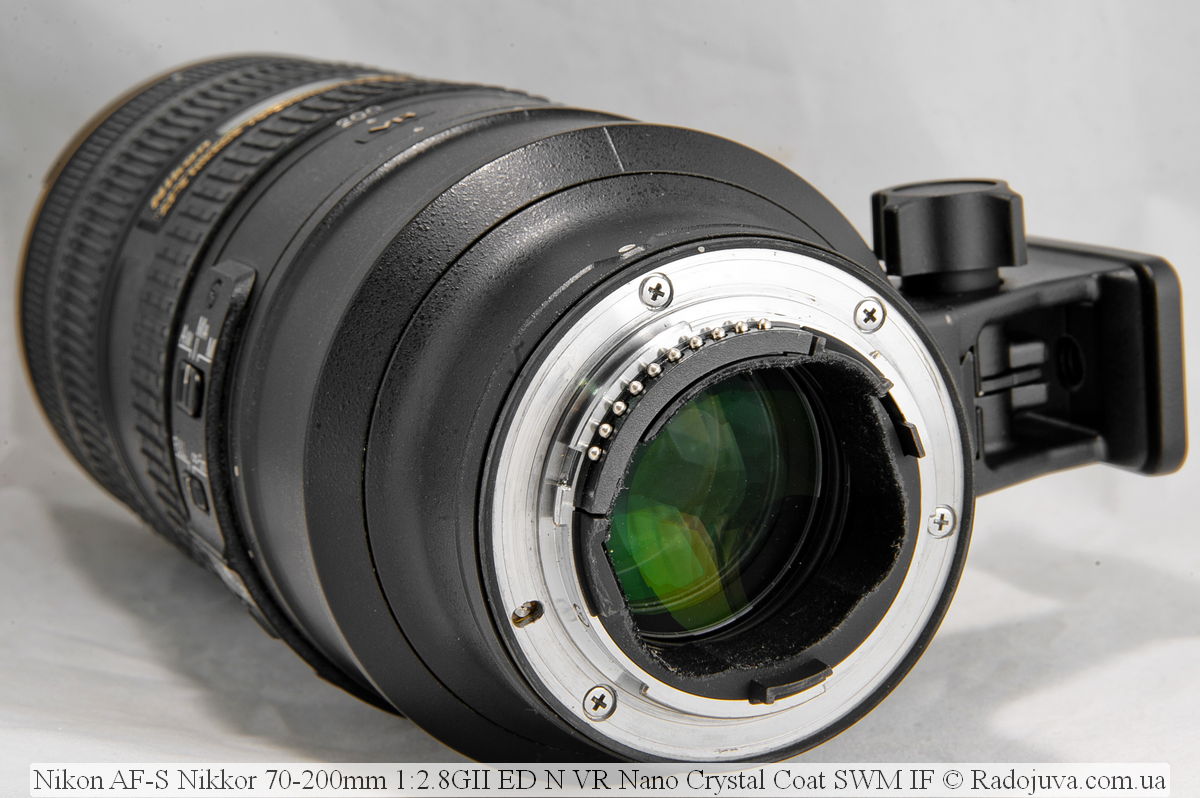
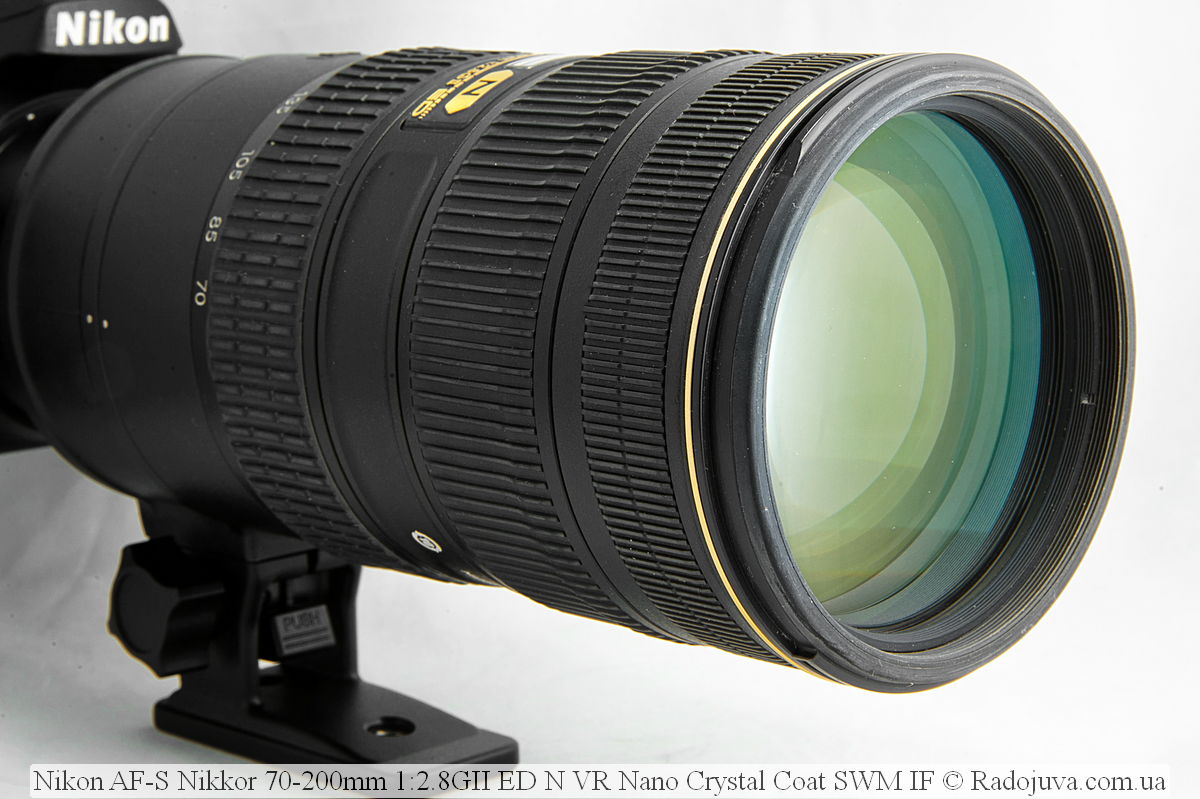











































































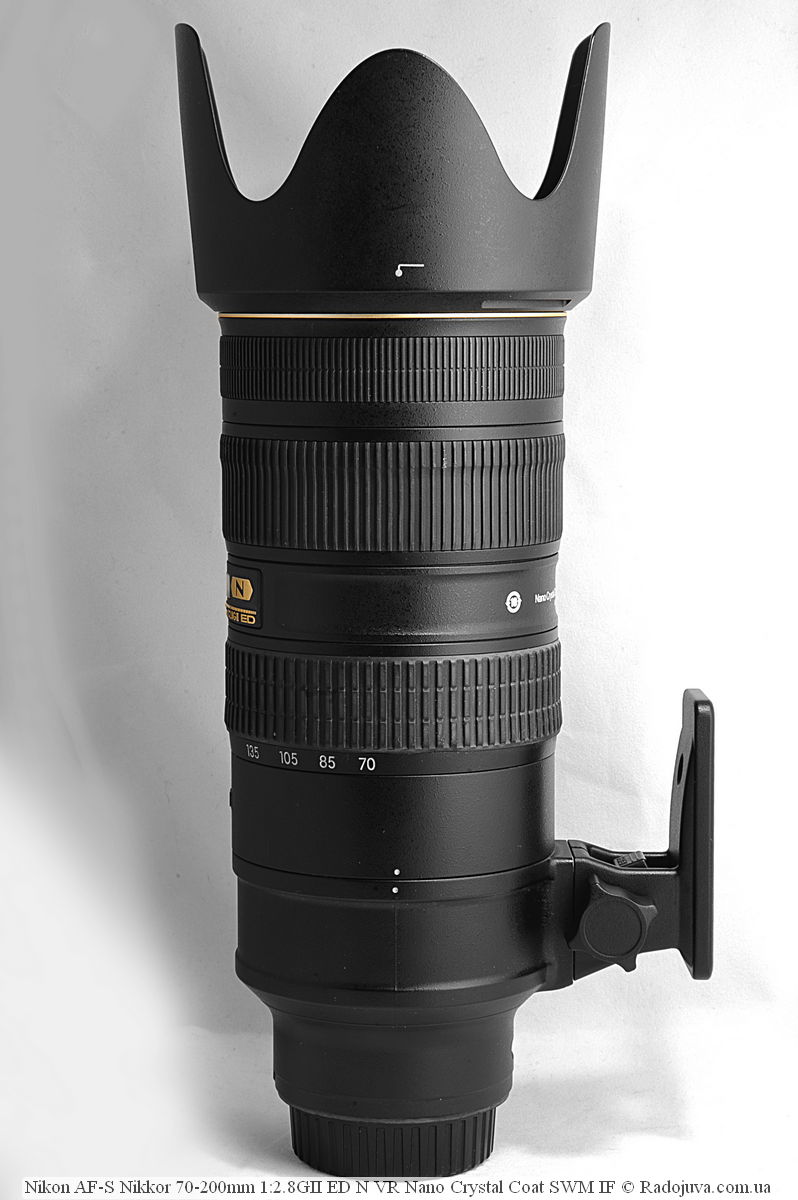
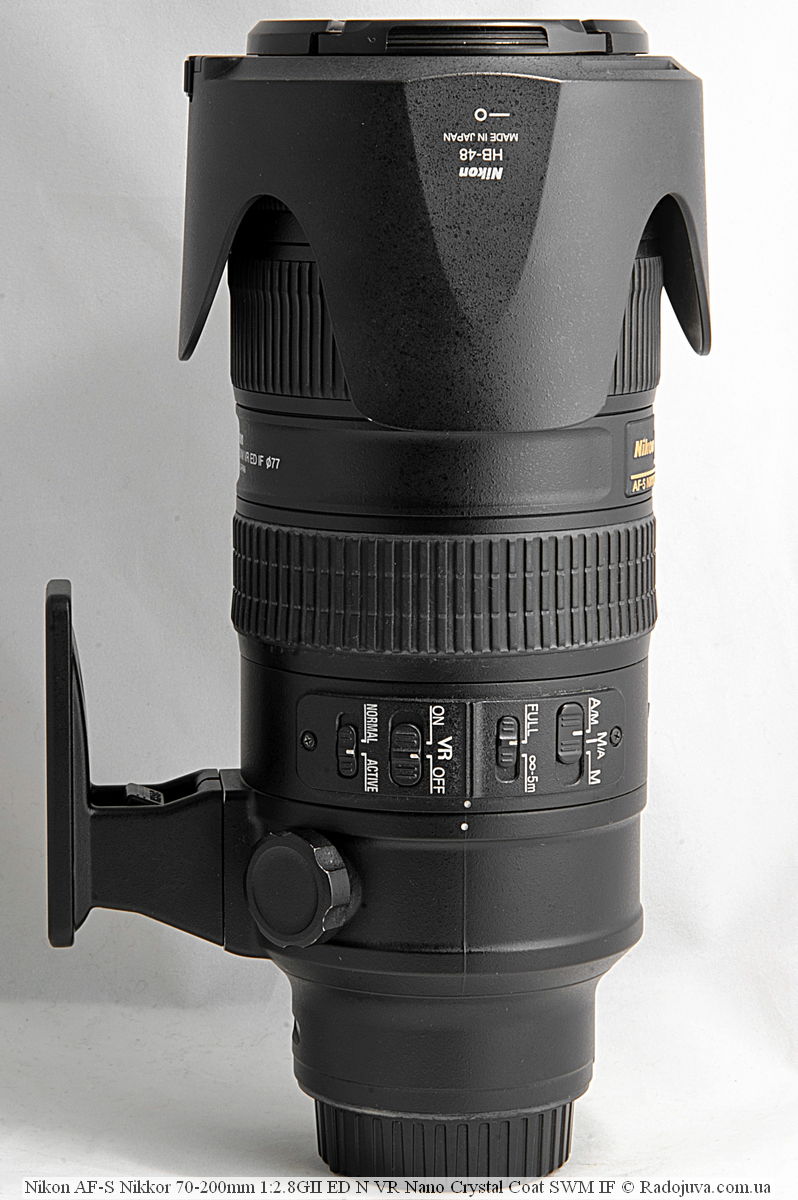
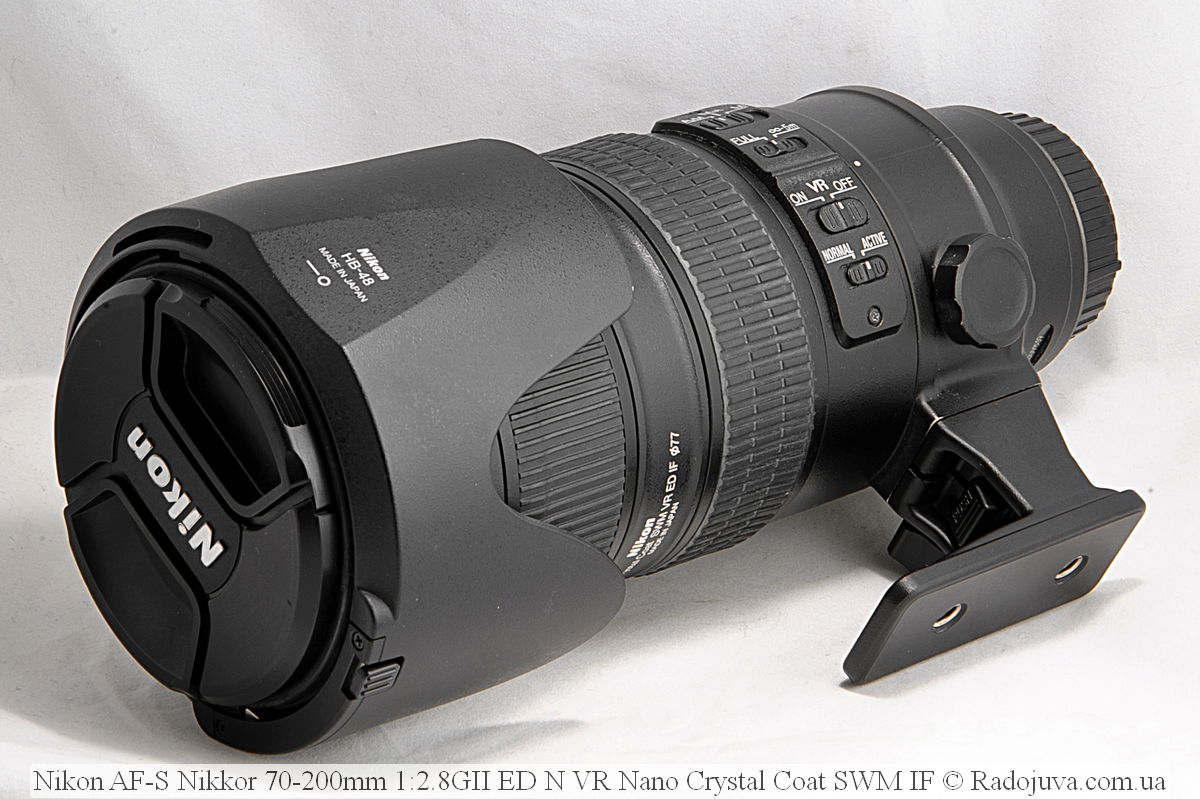
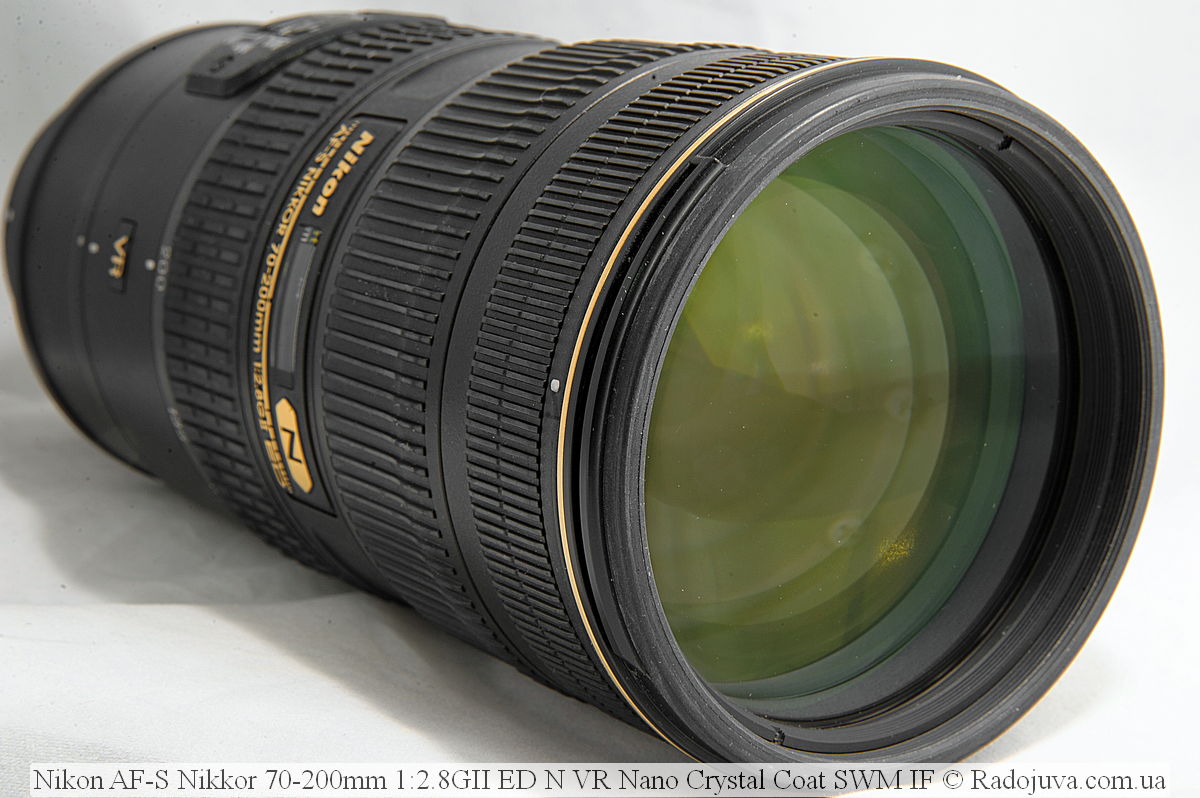

Hello, here are some people like a picture with MK3 more than a subject, but how competitive is a picture with 70-210 f4?
According to some - completely uncompetitive
I bought a photo in intellect in 2014, chose it, although there were discounts and gifts on the camera, it cost 76 thousand, I saved for a year on camera, I took d800 to it, now the whole trinity is from 14-200.2.8
Well now you are a happy person! Glad for you !!!
what a bastard
Great review! It was interesting to read Arkady's opinion about this lens, since he himself only used it a little. But my short acquaintance made the same impression on me as on Arkady, judging by the review. It's simply the best zoom telephoto ever. As I understand it, in every full-fledged system, 70-200 2.8 or an analogue is, along with 24-70 2.8, an indicator of system development. This pair is used to judge the system as a whole by those who shoot reports of various kinds, from weddings to extreme sports. I managed to try 70-200 2.8 from canon, nikon, tamron and sigma. I note right away that sigma is clearly in flight. This is the only one of 4 lenses that blurred with focus, dulls and at the same time did not give out extreme sharpness at 2.8. But the versions from Nikon, Canon and Tamron (all the newest ones) turned out to be very similar. Of course, if you are a pro and shoot for several hours every day in the rain and under the snow, then it is better to take your own glasses. But for less frequent and harsh use, I fully admit the use of tamron. He surprised me a lot. For a noticeably lower price, it offers a very fast autofocus, not much inferior to Nikon and Canon (though not all three compared, at the time of inspection of the Tamron there was only Canon). Plus, the tamron came out very sharp and on a computer I could hardly notice the 2.8 difference between the canon and the tamron - basically the angles at the extreme focal lengths with a strong increase gave some difference. For real photographs, this difference is insignificant. At the same time, Tamron essentially has everything that Nikon and Canon have - 2.8, protection from dust and moisture, a decent body, an excellent stub. So in general, I think the last tamron 70-200 2.8 is a very successful tamron lens. They released an excellent fully stabilized triptych - 15-30 2.8, 24-70 2.8, 70-200 2.8, which will come out cheaper than analogues from Canon and Nikon and at the same time offer stabilization at all focal lengths (Canon still does not have a standard bright zoom with stub, Nikon just came out, and both have no light, stable shiriks).
But still, most often, just for your own comfort, it’s better to take your own glass :) And 70-200 from Nikon came out very worthy. It’s very interesting what they can add to the new one, it seems that this one is almost perfect :)
You will forget that on MDF at 200mm EGF becomes 135mm (the very meager magnification scale). This is the worst 70-200 / 2.8 in this sense. That's what needs to be improved!
I do not forget, this is written in black and white in the article. When I used the lens, I myself was very surprised by this behavior of the top zoom system.
The hood is really very small - much smaller than on 70-300 VR
nice blend, as if shy.
for a long time did not go to the radozhiva ... then I decided to look)) You squabble in the comments, only the eminent troll-lynx has already switched to prison jargon)) and it has not been deleted yet !!! Apparently Arkady likes this kind of communication ?? people, what have you come to (
Therefore, we focus on the Pastor. For which he respect and respect
Yes, Mr. Pastor with his wide knowledge of the technology park and the desire (lack of independence) to talk about it, it’s just right to keep a journal of his own or to give lectures in a good photo school.
from this we can conclude that Rysyamba is a necessary condition for Radozhiv, and you are just a variable. ;))
There is too much dirt in the comments. Hopefully the author will cover the “beer yard”.
The lens is really cool, but it's possible for a portrait and is already too sharp. And the Lynx has already lifted everyone with its flood on all branches.
Unlearn speaking for everyone, young man.
Sorry, but how can he even be too harsh?
Is not this considered by all the most important quality?
Surprising and incomprehensible.
Well, some people buy all sorts of Canon EF 135 SoftFocus. So there are people who like softer))
And he, by the way, if you do not use SF anything like for a lens 30 years ago. Not razor sharp, but just for the portrait.
In this age of free software, there are 1000 ways to sharpen, and even blur. But intellectually soften the picture. so that it does not look cheap it is almost impossible (from personal experience). Artists do not copy reality, they create it to your taste
There is, only all of them are not very. So sharpening so it doesn't look cheap is harder than vice versa
And besides yourself, who will not agree? Can you really appreciate what you are writing and what you look like after what is written?
Hello! Starting to read the article, I was sure that Tamron 70-200 Di VC USD would probably emerge in the comments ... Two years ago I was choosing between Nikon and Tamron. I chose Tamron, because I did not understand what to pay extra money for ... Only one moment later appeared: at negative temperatures the autofocus sometimes seems to “fall asleep”, but maybe this is a feature of my copy ... Or maybe not ... Overall impression: the assembly is excellent, solid, no backlash, squeaks or extraneous noise, I like the picture, the sharpness is decent, the focus is tenacious, there is little marriage ... I also have 85 1.8G - sometimes from the photo I myself cannot understand which of these two I shot ... Although 85 1.8 of course it will be sharper ...
I cannot disagree. I myself made exactly the same choice, which I never regret. I liked the picture and sharpness very much, the speed and focusing accuracy correspond to my modest requirements, the stabilizer is very effective, the build quality (especially when compared with Tamrons of previous years) is at its best. Compared with analogue from Sigma and relatives. I didn’t notice much difference with my family… It is (Tamron's vignette is more pronounced, as well as the native one has a stronger construct, although Tamron is not very “plastic”), but not twice as much as the cost. Sigma loses in everything ... both in the speed and tenacity of autofocus and in sharpness across the field of the frame and in the picture, at almost equal cost.
As for the declared dust and moisture protection ... time will tell. I don't plan extreme use in the Amazon jungle and in the Antarctic ice, but drizzling rain, I hope it will survive :)
I will add. I tested the entire three on the D750. Maybe on a more serious technique, the difference will be more noticeable.
The same thing happened in the winter with the Tamron 70-200 of the latest version - autofocus failed at the right time. Recovered by detaching the lens. This is not permissible for responsible shooting! From the pros - from Tamron, MDF 0,95 m wins.
And I will add one more thing, because Sigma 70-200 2.8 also "twisted" when choosing: 1. In terms of sharpness at 2.8 it is in no way comparable to Nikon and Tamron. When the stabilizer is working, a click is heard and the image seems to bounce .. In general, I put it aside almost immediately ... And on the Tamron, except for 2.8 other diaphragms, I, frankly, do not use - there is no need ..
Tell me what's wrong with the first version of Nikon 70-200
Everything is so with her, only VR II is considered the best, especially in the corners of the pictures. At the NHHC (nikon help hotline center) it was once said that VR catches less glare than VR II. But the NHHC was cut and nowhere is there a copy of their very useful data.
thank you answered, I just somewhere in the discussions around the corner saw a mention about the focus shift on the first model
bargained for up to 55000, okay? or expensive?
Thank you for the review, but it seemed to me according to the sharpness characteristics of the Nikkor AFS 80-200 MK4 favorite, only without VR-representative of the old Nikonov school. By the way Arkady, this old man caused genuine delight in you, right?
Yes, he is very good. Of the unstable, I recommend it.
And here is the continuation of the glorious line - AF-S NIKKOR 70-200mm f / 2.8E FL ED VR. Now like Canon with fluorite :) It is interesting to see how else you can improve an already excellent lens. Is that adjusted to the standards of 36 megapixels.
and with the same aperture
All good)
Choosing between the Nikkor 70-300 AF-S 4,5-5,6 G ED and the lens review data.
Your pros and cons!))) I want a razor, speed. Focal lengths are equally pleasant, I do not choose between them much.
The goal is to shoot birds, nature ... occasionally a reportage.
Carcass without a screwdriver.
The downside of this lens is the price and weight. Plus everything else
Nikkor 70-300 AF-S 4,5-5,6 does not mean to compare with it in quality?) Just in this article the photos are not very sharp, as it seems to me ...
It seems to you. Or you confuse sharpness and contrast. Estimating sharpness by 3 megapixels photo is unrealistic, you need to download the source. And the contrast in the presented photos is really low.
I see, thanks)
why is the contrast not high? what are the reasons? Does it depend on the lens in this case?
From lighting in this case. Backlit photography in the bright sun. If you look at the photo with the cat and, at the end, in the photo with the houses, you will see that the contrast is not worse than that of 70-300. Under the birds it is better to take it. At 70-300 these same 300 mm are not very resolution, feathers will merge
Usually they say that if such a question arises, it is better to take 70-300 BP. But I’ll explain. The fact is that even though these lenses are similar in focal lengths, they are very different in purpose. If 70-300vr is an initial full-frame zoom or just a good crop zoom, then 70-200 2.8vr is the company's top lens. I believe that 70-200 2.8vr is a lens for active work or for a very enthusiastic hobbyist. If there is still little experience and there is no certainty that you need a 2.8 aperture, then it is better to take a cheaper, but very high quality 70-300vr. Also note that they differ greatly in weight. If even a fragile girl can carry 70-300 rubles for a day, then 70-200 2.8 is one and a half kg. And it will be very difficult to carry it everywhere and everywhere. In general, if you are not sure that 70-200 2.8 is needed, I would advise you not to spend extra money and take 70-300 rubles.
thank you tears pour, I want 70-200, but still 1,5 kg with a weight of 44 kg)
Yes, it will be hard. I have a daughter, how do you weigh, for about 20 minutes my 70-200 can still be dragging, then everything, back, neck, hands hurt :) On the other hand, if you really want a terribly awful 70-200 2.8 and there is free money for it, then you can take care buying a special backpack. With a backpack it will be easier to wear noticeably, 2-3 kg in it are almost imperceptible. Get only on a specific shooting, take 5-10 minutes and back to the backpack.
Another option is a special belt. Usually the camera comes with a neck strap, but there are straps that fit over the shoulder. It's easier to wear this way too. I really have a strap for two cameras, I dress like a backpack and have two cameras hanging on the sides. It is noticeably easier to carry this way than on the neck, especially if 10 hours in a row.
Ksenia, proof in the studio :) otherwise I’ll marry without looking :)
really would like to see a comparison of bp1 and bp2
Hello Ksyu. I know that this is not badoo or even tinder, but ... .. Can I meet you?))
but compare pliz with nikon 180 mm) ...
And the first version 70 - 200? How much worse is it than the second one?
In corners, significantly worse
If you need the entire frame with 100% sharpness, then there may be a difference in the corners, but not critical. And 99% of the shots have bokeh angles, because the plot-important part rarely goes beyond the golden ratio. On the crop, there is practically no difference between the first and second versions. On VR II, the stabilizer is stronger. On VR I, the focus lock buttons are very convenient, on VR II they were removed for some reason. There is no more difference between these versions.
I'm an amateur. When I chose 3-70 years ago, I considered nikkor and tamron. And, yes, sigma was also on the list of candidates ... I bought a tamron di vc usd. The determining factor was the image quality - the tamron seemed to me sharper in the entire range, otherwise I did not notice the difference with the nikkor.
Nichrome to myself - lenses for the price of a car !! Are you out of your mind? And you also talk about the quality of the pictures. You have all the conversations only who has which car and which glass. Everyone forgets about the pictures. All your pictures are an indicator of the work of very expensive optics and an ultra-expensive device - no more
As Shura Balabanov said - "You are a fool!"
Balaganov)
And which of the carcasses in this review belongs to the category of "super-expensive apparatus"?
Well, of course, the Nikon D3200.
“Compensate for 3 stops in shutter speed. In numerical terms, this means that you can shoot at shutter speeds 8 times slower ”
Probably something is not accurate in the description, either 4 stops, or not 8 times ...
Can anyone tell me how it feels better with this version compared to MK2? Especially if you do not take into account the stabilizer (and so it is clear what it gives), but what can someone say with the picture and everything else (from experience)?
3 feet is 8 times, 2 * 2 * 2 (or 2 to the third power). 4 stops is 16 times.
This GII VRII is technically good and pleasant to use. MK2 - push-pull (trambon), which makes it inconvenient, noisy, slow for many. It is believed that due to the greater amount of distortion, the versions of MK1, MK2, MK3 give an artistic drawing, and modern ones - boring (technically correct).
Gentlemen, did anyone compare the described lens with the tamron 70-200 2.8 g2. I am faced with a difficult choice, either to take a new tamron with a five-year guarantee or my own Nikon's but used one. lens. I already own one tamron 15-30 2.8 sp and, if I don't find fault with it, I am satisfied with the results. Thanks for the opinion in advance ...
Correctly write "find fault", I know, sealed
+))
Good evening, I have a question. In this lens, I noticed a kind of backlash in the rear lens ... it does not affect the stub and focusing .. what is it then? stub lens so goes or is it a breakdown ?? did anyone have this ???
thank you in advance.
Good day to all! I bought myself nikon70-200B / U. When you press the button halfway, the focus point trembles and it seems to me that it is shifting a little, is it a breakdown, or is the focus or stabilizer working normally?
Good evening!
Colleagues, I have long wanted to purchase a high-quality TV set for Nikon d850 and now I can’t decide whether to take the new Nikon AF Zoom-Nikkor 80-200mm f / 2,8D MKIII, or used Nikon AF-S Nikkor 70-200mm 1: 2.8GII ED N VR. I shoot mostly dynamics, reporting, sometimes a portrait. What do you advise? Thanks!
The dynamics are for GII. A portrait is 80-200. In this case, it is GII.
The question is perhaps a stupid one, but I almost ran into scammers trying to buy 80-200, many moments were wary of communication, as the manager answered questions about the product. I really wanted it, I chose it for the price-task
I found the Nikon 70-200mm f / 2.8G ED AF-S VR in Pixel for my happiness.
It is alarming that I did not work with this store (1), too big a discount to the price (the cost is only 40 thousand rubles) even for used vehicles (in Russia, new ones cost a hundred far) (2)
Judging by the review of the pre-version, it was the G model that did not have it.
the name in the store by specification is simply VR, without Roman II
I think how to protect myself, and whether someone took similar lenses at a big discount.
But the lenses for 80-200, 70-200 relatives and the truth, in my Peter in reliable stores is not very much, no one is happy to part (such cattle is needed by yourself). And here! Obtm partner Nikon
Thanks in advance for your advice.
The sales manager quite often is just a dumb and product-poor person.